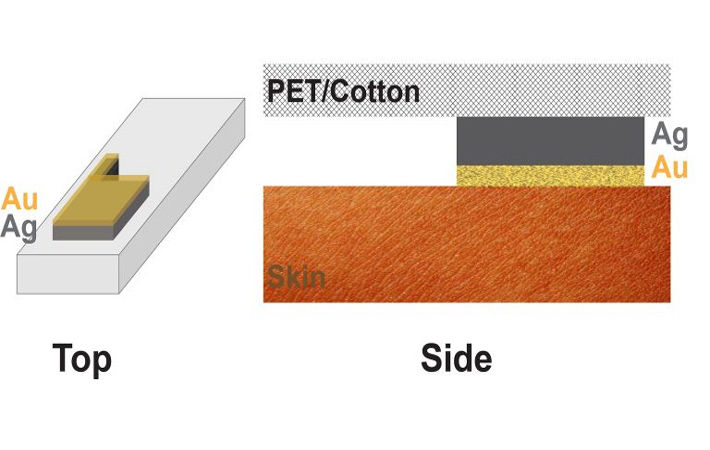
Bioelectrical sensors on the skin can be used to measure electrical signals in the body, like heart activity and muscle contraction. While that provides valuable information for clinicians, current bioelectrical sensor technology can be ineffective, uncomfortable, expensive, and difficult to manufacture.
The research is published in APL Materials. The sensor measures electromyography (EMG) signals that are generated in muscles when they contract. EMG signals are useful for studying muscle fatigue and recovery. These also have the potential to help diagnosis and treatment of neuromuscular diseases.
“The signal we measure is a voltage over a time,” said author Huanan Zhang. “Every time your finger moves, the potential of the body, of the muscle, changes. So, we are able to detect that difference in potential.”
Initially, the scientists printed silver paste directly onto fabric. Silver is conductive, making it a good material for detecting electrical signals. However, it is also somewhat toxic, so prolonged exposure can lead to skin irritation.
To harness the beneficial properties of silver, the team deposited a layer of gold nanoparticles on top of the silver. The gold completely encapsulated the silver particles, preventing them from touching the skin. The result was a detector that was both conductive and non-irritating to the skin. The amounts of gold and silver are small meaning the sensor is inexpensive.
The scientists tested the biosensor’s performance by placing it on the bicep and fingers and monitoring the signal as those muscles progressed through various exercises.
Since the sensor is part of the fabric and is designed to be used over long periods of time, it needs to withstand washing. The team retested sensor performance after multiple washings and found that the performance remained high.
“This work not only designs a wearable device, which has the convenience factor, but it also has great performance and is biocompatible,” said Zhang.
Fibre2Fashion News Desk (SV)

